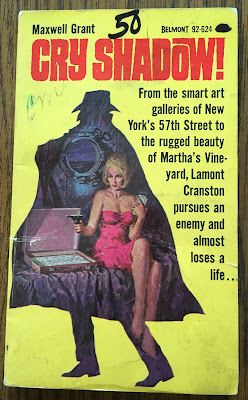In "The Living Shadow" we have a villain named English Johnny who is also in the lunch wagon business. Not only does English Johnny play a part in the story, there's also some great action that takes place in one of English Johnny's lunch wagons that involves The Shadow! What in the world is a lunch wagon? That's what I wondered as I read the story so I had to investigate!
To some degree, lunch wagons started out as the food trucks of the late 1800s and early 1900s. In 1872, Walter Scott parked a covered wagon in front of a newspaper office in Providence, Rhode Island and sold food items out of it to reporters and others. In New York City in 1893, the Church Temperance Society operated a lunch wagon from 7:30pm to 4:30am and offered warm food and beverages to workers in the hopes of keeping them out of the saloons.
 |
| 1893 magazine cover featuring a lunch wagon |
 |
| A lunch wagon complaint from 1907 |
Lunch wagons began to be massed produced and started including stoves, sinks, refrigerators and places for customers to sit. Several manufacturers built them and an enterprising person could purchase one and go into the lunch wagon business for themselves!
As time went on, lunch wagons became less mobile and more stationary. Based on the action that takes place in The Shadow story, the picture below is what I imagine English Johnny's lunch wagon looked like!
That's just a brief look at the history of the lunch wagon! I hope it adds some background perspective whenever you read about them in the pages of The Shadow!!




